What Are Metaverse Educational Resources and Why Are They Important?
Metaverse educational resources are innovative teaching tools and learning environments that exist within the burgeoning space of virtual reality. They are designed to enhance the educational experience by providing interactive, immersive simulations and activities. These resources can range from virtual classrooms and laboratories to entire educational worlds where users can explore and learn in a three-dimensional space.
The Emergence of Virtual Learning Environments
As technology advances, the metaverse—a collective virtual shared space created by the convergence of virtually enhanced physical reality—has started to offer remarkable opportunities for education. These environments allow students to engage with content in ways that traditional textbooks and lectures simply cannot match. For instance, through a virtual reality headset, learners can travel back in time to historic events, dive into the human body to see how it works, or experiment with chemical reactions in a safe, controlled virtual lab.
The Significance of Metaverse Resources in Education
Why are these metaverse resources so crucial? They provide an engaging, hands-on learning experience that can cater to various learning styles, particularly for visual and kinesthetic learners. Furthermore, they offer access to educational opportunities that may be limited in the real world due to logistical, financial, or geographical constraints. By removing these barriers, metaverse educational resources can democratize learning and open up new possibilities for students no matter their circumstances.
Another significant facet is the capacity for fostering social interaction and collaboration. The metaverse supports real-time interaction not just between students and teachers but also among peer groups scattered across the globe. This facilitates the development of a global classroom where individuals from diverse cultures can come together to learn from one another. Such global connectivity is an essential step towards preparing students for an increasingly interconnected world where cross-cultural competencies are more important than ever.
Potential and Challenges of Metaverse Educational Resources
Despite the potential benefits, integrating metaverse resources into education comes with its challenges. There are concerns regarding equal access to the necessary technology, managing screen time effectively, and ensuring that these resources meet educational standards. Nevertheless, the potential for a transformative impact on education cannot be ignored. Education systems around the world are grappling with how to incorporate these resources into their curricula, understanding that they hold the key to a more interactive, personalized, and impactful learning experience.
In conclusion, metaverse educational resources are reshaping how knowledge is delivered and acquired. They offer immersive learning environments that support interactive and personalized education. While challenges remain in their widespread adoption, their importance in the evolving educational landscape is clear, as they represent a significant step towards an inclusive, engaging, and comprehensive educational framework for learners of the future.
Top Platforms Offering Immersive Educational Experiences in the Metaverse
The Metaverse, a collective virtual shared space, has evolved beyond gaming and social media to become an educational frontier. With the integration of virtual reality (VR) and augmented reality (AR), platforms are emerging to revolutionize how we learn and interact with information. This article explores the leading platforms offering immersive educational experiences in the Metaverse.
Engage Learning and Collaboration in Virtual Worlds
Engage is at the forefront of educational spaces within the Metaverse. This platform specializes in VR to create shared learning environments where students and educators can interact in real-time. From virtual classrooms to science labs, Engage facilitates lectures, workshops, and meetings, all with a focus on interactivity and user engagement. Its ease of use and emphasis on collaborative tools make it an ideal virtual space for educational institutions to explore the potential of Metaverse learning.
Alchemy VR – Exploring New Realms of Knowledge
Alchemy VR takes a different approach by producing immersive VR experiences that blend storytelling with education. Through visually stunning documentaries and interactive journeys, users can explore areas like the Great Barrier Reef or the ancient pyramids of Egypt. This platform is especially powerful for subjects that benefit from a visual learning approach, making complicated concepts more accessible through an experiential form of education.
Discovery Education VR – Bringing the World to the Classroom
Discovery Education VR aims to bring the vastness of our world into the classroom. With a focus on exploration-driven learning, students can take virtual field trips to far-flung corners of the globe or delve into outer space. This integration of VR technology pushes the boundaries of traditional learning, helping to spark curiosity and retain engagement in an educational context. Discovery Education VR is especially noteworthy for its well-curated content that aligns with curriculum standards.
As the Metaverse grows, so does the opportunity to transform how we learn. These platforms are just a few that are pioneering the realm of immersive education, providing students and educators with innovative tools to explore the virtual sphere of knowledge. Engaging with these platforms opens a gateway to an unprecedented learning experience that transcends the physical limitations of the conventional classroom. The integration of immersive technologies in education is not just enhancing learning but redefining it for a digital future.
Real-world Case Studies: How Educators Are Utilizing the Metaverse
With the rise of virtual reality and advancements in online learning, the concept of the metaverse has been increasingly embraced by educators worldwide. Facilitating a leap in how knowledge is shared and acquired, the metaverse provides immersive environments that are transforming the educational landscape.
Innovative Learning Environments in VR
Taking learning out of the traditional four walls, educators are venturing into the metaverse to create vibrant and interactive 3D worlds. Case studies show that by utilizing platforms such as Decentraland and VRChat, teachers can establish realistic simulations for students to explore complex subjects like biology, history, and engineering. Through virtual dissections and historical re-enactments, for example, students can gain a deeper understanding of the curriculum in a dynamic and engaging way, beyond what textbooks can offer.
Global Classrooms and Language Learning
The metaverse also breaks down geographical barriers, allowing for truly global classrooms. English as a Second Language (ESL) instructors, for instance, are taking advantage of these virtual spaces to match learners with native speakers, thus enhancing language acquisition through authentic conversation practice. The live interactive settings replicate real-world scenarios, enabling students to speak and learn in a variety of contexts, from ordering food in a virtual café to conversing with locals in a simulated city square.
Enhanced Accessibility and Inclusive Education
Accessibility is at the heart of the educational potential within the metaverse. Learners with physical disabilities find new opportunities in these virtual settings where mobility is not limited by the physical world. Educational initiatives have been documented where wheelchair-bound students participate in virtual athletics or conduct scientific experiments in zero-gravity conditions, scenarios that would be challenging or impossible in a traditional school setting. The metaverse is proving to be a platform for inclusion, where all students have the chance to fully engage with the material and their peers.
Collaborative Projects and Real-time Feedback
Collaboration is key to the metaverse’s success in education. Students from different parts of the world can work together on projects within virtual workspaces, exchanging ideas and creating together in real-time. This interactive experience is also beneficial for teachers, who can provide immediate feedback through the metaverse’s tools and systems. Peer review and collaborative assessments become an interactive process, engaging students further and providing a shared space for growth and improvement.
In conclusion, these real-world case studies reveal a small part of the vast potential the metaverse holds for education. From immersive learning environments to global classrooms without borders and inclusive education for all, the metaverse is setting a new standard for what is possible in the realm of learning and teaching. As technology continues to evolve, it’s clear that educators will find even more innovative ways to harness the power of the metaverse for their students’ benefit.
A Step-by-Step Guide to Accessing Metaverse Educational Resources
Understanding the Metaverse and Its Educational Potential
The Metaverse, a collective virtual shared space created by the convergence of virtually enhanced physical and digital reality, is rapidly becoming a platform for innovative educational experiences. From virtual classrooms to interactive learning modules, the Metaverse offers a unique and immersive way to acquire knowledge. By leveraging technologies such as virtual reality (VR) and augmented reality (AR), educators are exploring new pedagogical approaches that can transform the way we learn.
Identifying the Right Metaverse Platforms for Learning
Before diving into the Metaverse, it’s crucial to identify which platforms are best suited for educational purposes. Platforms like Second Life, AltspaceVR, and VirBELA offer environments specifically designed for learning, providing virtual spaces for classes, workshops, and collaborative projects. Exploring these platforms can help you find the right fit for your educational needs, whether you’re a student, teacher, or lifelong learner.
Exploring Educational Opportunities in Popular Metaverse Platforms
- Second Life – A pioneer in virtual world space, offering opportunities for real-time interaction and creation of educational scenarios.
- AltspaceVR – Provides a space for virtual meetups and live events, often used for professional development and community learning.
- VirBELA – Builds virtual campuses for online universities, fostering collaboration and social learning in an immersive environment.
Setting Up the Necessary Hardware and Software
Access to the Metaverse typically requires specific hardware and software. The essentials include a VR headset, such as Oculus Quest or HTC Vive, and a compatible computer or smartphone. Additionally, downloading and installing the required apps or clients for your chosen Metaverse platform is a must. Ensure that your technology meets the specifications for an optimal experience, as this can significantly affect your ability to engage in educational resources.
Required Equipment for Full Immersion
- VR Headset (Oculus Quest 2, HTC Vive, Valve Index, etc.)
- Powerful computer or smartphone
- High-speed internet connection
Navigating Educational Content within the Metaverse
Once you have the required technology, the next step is to navigate the educational content within the Metaverse. Most platforms offer a diverse range of educational experiences, including virtual lectures, interactive simulations, and peer-to-peer learning. Utilize the search and discovery tools of the platform to find courses, workshops, and educational games that align with your learning objectives. Engage with the virtual community to enrich your learning journey and take advantage of networking opportunities.
Finding and Engaging with Educational Resources
- Use in-platform search tools to locate educational courses or activities.
- Join virtual classrooms and participate in interactive discussions.
- Take part in simulations and practical exercises for experiential learning.
Overcoming Challenges and Ensuring Safe Learning in the Metaverse
Enhancing Digital Literacy
Effective learning in the Metaverse is contingent on users’ ability to interact with its complex systems. As such, digital literacy programs are paramount. These programs aim to teach critical skills like navigating 3D environments, understanding user interface elements, and managing digital interactions. Interactive tutorials and guided tours can serve as initial steps to building confidence and competence within the Metaverse’s learning environments.
Promoting Content Moderation
Equally critical is the role of content moderation in the Metaverse. With a burgeoning array of user-generated content, maintaining an educational and respectful atmosphere is a must. Strategic partnerships with experts in cybersecurity and artificial intelligence are leading to advanced moderation tools that filter and remove inappropriate materials, protect user privacy, and ensure a focus on learning and positive virtual interactions.
Ensuring Safe Learning in the Metaverse
The Metaverse provides an innovative platform for immersive learning, but ensuring the safety of its users is a top priority. Developers and educators must work together to create a secure environment that promotes constructive learning experiences. This involves implementing robust safety protocols, setting up secure communication channels, and providing users with the ability to report misconduct easily. As new safety technologies emerge, the Metaverse continues to evolve into a secure space for educational growth and exploration.
Implementing Safety Protocols
Safety measures such as two-factor authentication, end-to-end encryption, and regular security updates form the backbone of a secure Metaverse. Two-factor authentication adds an extra layer of security during login processes, while end-to-end encryption ensures that conversations and data exchanges within the Metaverse remain private. Moreover, platforms are dedicating resources to monitor and promptly address any security vulnerabilities, creating a safe learning environment for all users.
Cultivating a Safe Virtual Community
A pivotal element in ensuring safety is the establishment of a respectful and inclusive virtual community. Clear community guidelines and a robust reporting system empower users to contribute to a collective culture of safety. Virtual moderators and real-time support services are also instrumental in addressing any issues that may arise, ensuring that every user can learn and interact without fear of harassment or abuse.
Understanding and Protecting Privacy
As users spend more time within virtual learning spaces, safeguarding their privacy becomes vital. Policies and technologies designed to protect personal information are constantly being refined. Anonymity options, customizable privacy settings, and transparent data handling practices all play a crucial part in fostering a secure environment where learners feel comfortable sharing ideas and engaging with others.

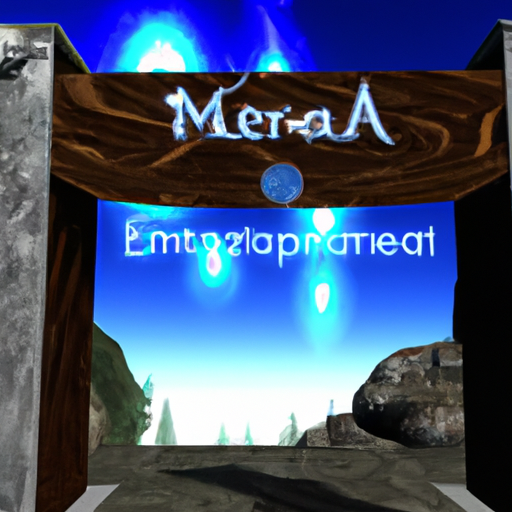

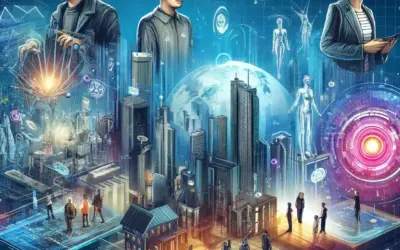

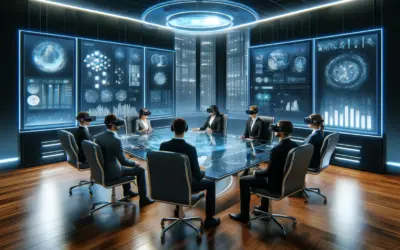
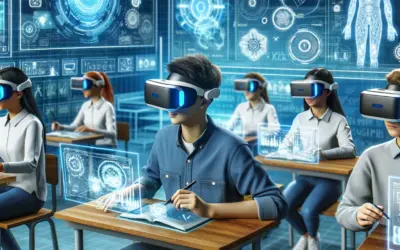
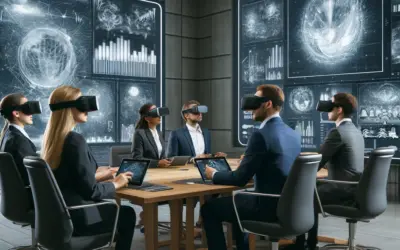
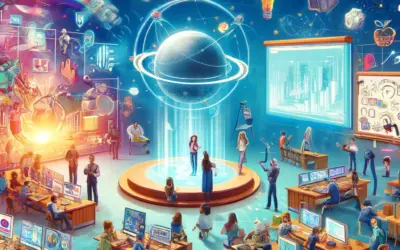
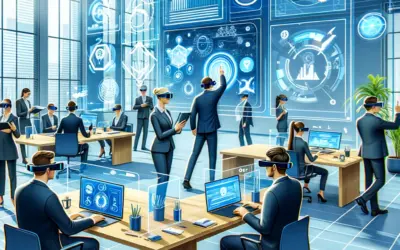



0 comentarios